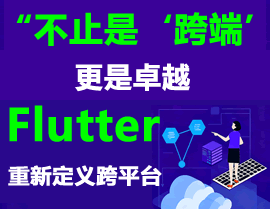在UniApp中实现悬浮窗口(悬浮按钮或可拖动组件)通常可以通过以下步骤实现,结合CSS定位和触摸事件处理。以下是具体实现方法及代码示例:
实现思路
- 使用绝对定位(
position: fixed)使元素悬浮在页面上。
- 通过触摸事件(
@touchstart、@touchmove)实现拖动功能。
- 动态更新元素位置,并限制在屏幕范围内。
代码示例
<template>
<view class="container">
<!-- 悬浮窗口 -->
<view
class="float-window"
:style="{ left: left + 'px', top: top + 'px' }"
@touchstart="onTouchStart"
@touchmove="onTouchMove"
>
悬浮内容
</view>
</view>
</template>
<script>
export default {
data() {
return {
left: 0, // 初始左侧位置
top: 0, // 初始顶部位置
startX: 0, // 触摸起始X坐标
startY: 0 // 触摸起始Y坐标
};
},
mounted() {
// 初始化位置(例如屏幕右下角)
const systemInfo = uni.getSystemInfoSync();
this.left = systemInfo.windowWidth - 80; // 假设窗口宽度80px
this.top = systemInfo.windowHeight - 80;
},
methods: {
onTouchStart(e) {
// 记录触摸起始位置
this.startX = e.touches[0].clientX;
this.startY = e.touches[0].clientY;
},
onTouchMove(e) {
// 计算移动距离
const deltaX = e.touches[0].clientX - this.startX;
const deltaY = e.touches[0].clientY - this.startY;
// 更新窗口位置
this.left += deltaX;
this.top += deltaY;
// 限制在屏幕范围内
const systemInfo = uni.getSystemInfoSync();
const windowWidth = systemInfo.windowWidth;
const windowHeight = systemInfo.windowHeight;
if (this.left < 0) this.left = 0;
if (this.top < 0) this.top = 0;
if (this.left > windowWidth - 80) this.left = windowWidth - 80;
if (this.top > windowHeight - 80) this.top = windowHeight - 80;
// 更新起始位置
this.startX = e.touches[0].clientX;
this.startY = e.touches[0].clientY;
}
}
};
</script>
<style>
.float-window {
position: fixed;
width: 80px;
height: 80px;
background-color: #007AFF;
color: white;
border-radius: 50%;
display: flex;
align-items: center;
justify-content: center;
z-index: 9999;
}
</style>
关键点说明
- 定位方式:使用
position: fixed 确保元素悬浮。
- 触摸事件:通过
@touchstart 和 @touchmove 实现拖动逻辑。
- 边界限制:通过
uni.getSystemInfoSync() 获取屏幕尺寸,防止窗口移出屏幕。
- 性能优化:避免频繁更新样式,仅在触摸事件中计算位置。
扩展建议
- 可添加点击事件(
@click)实现按钮功能。
- 支持动态显示/隐藏(通过
v-if 控制)。
- 适配不同平台(H5/小程序/App)的样式差异。
通过以上代码,即可在UniApp中实现一个可拖动的悬浮窗口。







